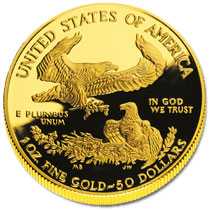
Ms. Seyfried described the Community Service commem as a "unique challenge" to market. Congress passed the law authorizing the coin in September 1994, and set a maximum limit of 500,000 to be minted. A surcharge of $10 per coin goes to the National Community Service Trust, which promotes volunteer work in nursing homes and the like.
The Mint began its marketing campaign for this coin by hiring a Washington area advertising agency, in September 1995, ten months in advance of the planned kickoff of sales. Ms. Seyfried and her marketing team met with the National Community Service Trust, with Mint designers and engravers in Philadelphia, and with focus groups of about 100 coin collectors in Denver, Ft. Lauderdale, and Baltimore.
The meetings with coin collectors revealed that they felt an ideal commemorative should:
The design was chosen, therefore, to maximize the historical connection, the aesthetics, and the potential appeal to collectors. The obverse was based on Augustus Saint-Gaudens' 1905 medal for the Women's Auxiliary of the Massachusetts Civil Service Reform Association. The marketing team decided to launch the campaign for the dollar on 12 July 1996, in order to avoid colliding with the Smithsonian commemorative program (which was felt to be more appealing to numismatists), and to fall after the Mint's last Olympic commemorative coin mailing but before the start of the Olympic Games themselves. The total budget for marketing was limited, since the Mint forecast sales of only 150,000 (about 120,00 proofs and about 30,000 uncirculated coins). Actual sales thus far are still 20 percent short of that target.
Ms. Seyfried next described in entertaining fashion the trials and tribulations of the marketing program for the Community Service coin. Direct mail appeals usually produce over 80 percent of all sales; to save resources, mailings were sent out only to Mint customers who had purchased over two commemoratives within the recent past, plus mailings to all those who had bought a Special Olympics commem, since they were felt to be likely buyers. The Mint did not rent any "affinity lists" for mailings on this coin, and direct mail sales pitches did not include a toll-free 800-number, in order to save resources.
One unique and very successful part of the marketing of this coin was the special Coin and Stamp set, which included a 1940-issue three-cent US postage stamp honoring Saint Gaudens with the commemorative dollar. The Mint was only able to obtain 25,000 of those stamps, and the special set was sold out in three weeks.
Press advertisements for the coin were focused on Numismatic News, Coin World, The Numismatist, and CoinAge, were done in black-and-white, and did include the 800-number. Some space for ads was also donated by philanthropic-oriented publications. In order to save money, there was no "launch event" to kick off the sales campaign --- though there may be a "semi-launch event" at Duke University this August, when the National Community Service Trust opens a new building there.
Congressman Joseph Kennedy (D-MA), the sponsor of this coin, in consultation with the Mint's marketing team made phone calls and sent letters to 30 potential corporate purchasers, in hopes that they would buy large amounts of the coins to use as awards. Ms. Seyfried also attended a major convention last year, the "Premium Incentive Show" in New York, to contact companies that produce and sell retirement gifts, thank-you items, etc. Unfortunately, few sales came from these efforts. (Treasury Secretary Rubin was unable to participate in the promotion, given legal concerns about soliciting for sales to companies which the U.S. Government regulates. )
"The whole story was a lot of promises that fell through," Ms. Seyfried reported. The United Way initially wanted to purchase 250,000 of the Community Service commemoratives, for instance, which the Mint could have provided for $19 each in bulk rolls --- but recent United Way abuses and scandals precluded the purchase. A targeted mailing went out to 5,000 organizations viewed as potential major buyers of $43 lucite-encased proofs, with discounts for orders of over 100 coins --- but the campaign led merely to a single "bulk" sale of 51 coins, plus a smattering of requests for 2 or 3 pieces, resulting in a total of 120 orders and sales of only 400 coins.
The bottom line thus appears to be that that the Community Service coin was an extremely tough commem to sell because of the relative poverty of the organizations involved in community service and the lack of appeal to numismatists. Sales from the Mint will end on July 11 this year, and no more marketing funds are available to promote the coin, barring last-minute bulk purchases. There are still, however, some possible rays of hope --- in particular, the late-April "President's Summit for America's Future" will bring together President Clinton, General Colin Powell, former President Bush, and others to discuss themes related to community service. Can the Mint can sell some coins there, to recognize and reward participants? "Keep your fingers crossed!", Ms. Seyfried concluded.